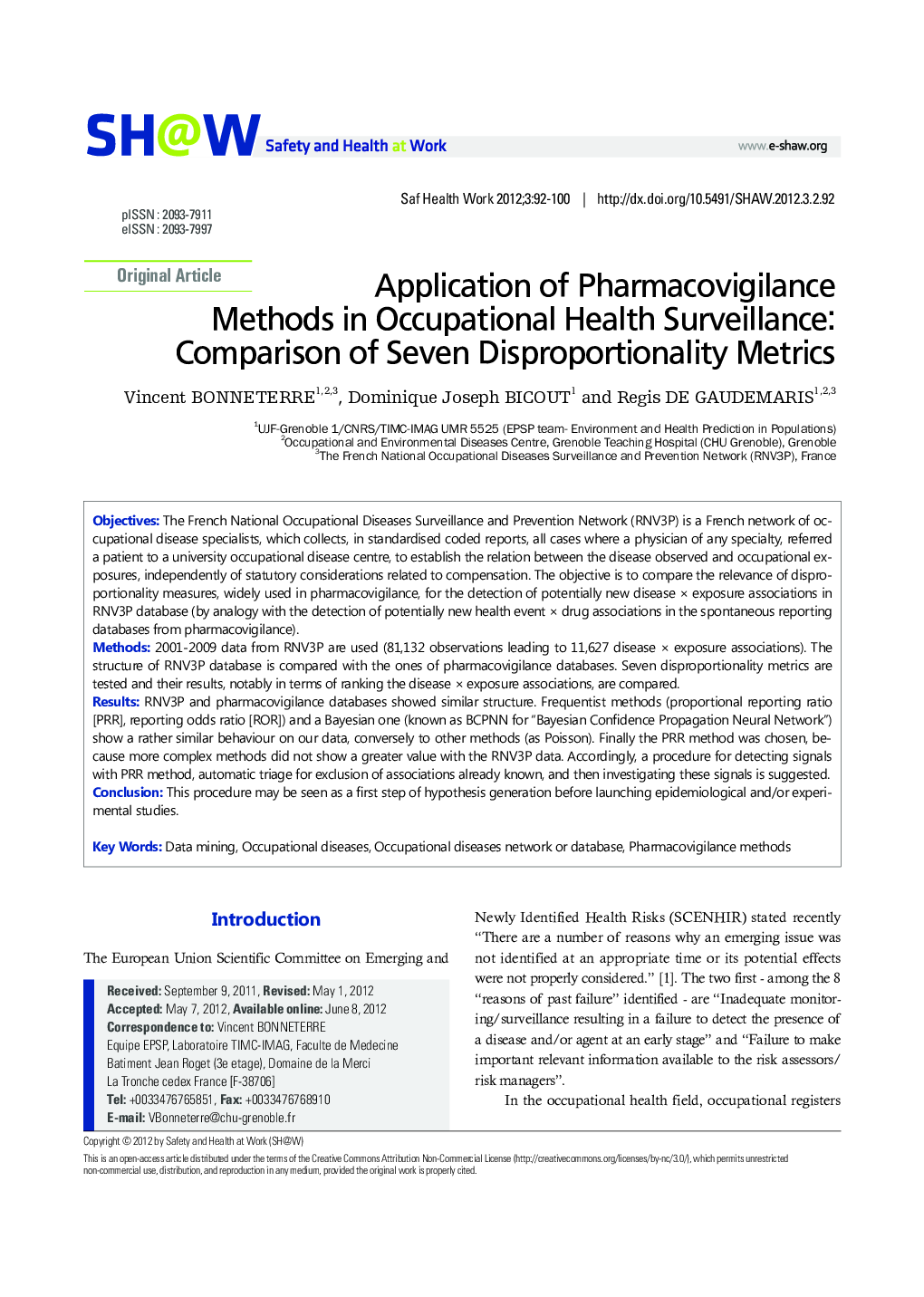| کد مقاله | کد نشریه | سال انتشار | مقاله انگلیسی | نسخه تمام متن |
|---|---|---|---|---|
| 1092218 | 952244 | 2012 | 9 صفحه PDF | دانلود رایگان |

Objectives: The French National Occupational Diseases Surveillance and Prevention Network (RNV3P) is a French network of occupational disease specialists, which collects, in standardised coded reports, all cases where a physician of any specialty, referred a patient to a university occupational disease centre, to establish the relation between the disease observed and occupational exposures, independently of statutory considerations related to compensation. The objective is to compare the relevance of disproportionality measures, widely used in pharmacovigilance, for the detection of potentially new disease × exposure associations in RNV3P database (by analogy with the detection of potentially new health event × drug associations in the spontaneous reporting databases from pharmacovigilance).Methods: 2001-2009 data from RNV3P are used (81,132 observations leading to 11,627 disease × exposure associations). The structure of RNV3P database is compared with the ones of pharmacovigilance databases. Seven disproportionality metrics are tested and their results, notably in terms of ranking the disease × exposure associations, are compared.Results: RNV3P and pharmacovigilance databases showed similar structure. Frequentist methods (proportional reporting ratio [PRR], reporting odds ratio [ROR]) and a Bayesian one (known as BCPNN for “Bayesian Confidence Propagation Neural Network”) show a rather similar behaviour on our data, conversely to other methods (as Poisson). Finally the PRR method was chosen, because more complex methods did not show a greater value with the RNV3P data. Accordingly, a procedure for detecting signals with PRR method, automatic triage for exclusion of associations already known, and then investigating these signals is suggested.Conclusion: This procedure may be seen as a first step of hypothesis generation before launching epidemiological and/or experimental studies.
Journal: Safety and Health at Work - Volume 3, Issue 2, June 2012, Pages 92–100